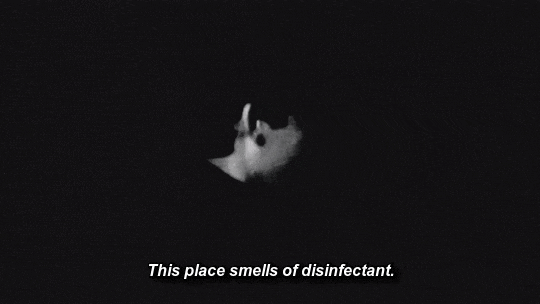
‘Ever since the Lumière brothers first set up their cameras, there have been a number of film-makers who have attempted, in various ways, to capture “truth” on celluloid. Albert Maysles came from a long line of documentary seekers of truth and was himself an inspiration for many who followed. In the tradition of kino-pravda (“cinema truth”) in the USSR in the 1920s, free cinema in Britain in the 50s, and cinéma vérité in France in the 60s, came the US direct cinema movement, as it was named by Maysles.
‘Unlike the contemporaneous cinéma vérité, the practitioners of direct cinema were less ideological and believed that the camera should be as unobtrusive as possible. Albert, as cameraman, carried the lightweight, silent camera that he perfected on his shoulder, its accessories built in and ready for adjustment. His younger brother, David, as soundman, had a sensitive directional mike and a Nagra recorder. They looked upon their work as a discovery of how people really behaved, first spending time with them to get acquainted, then filming their lives as lived. They emphasised that nothing was staged. It was “theatre without actors; plays without playwrights”.
‘It might have helped that both brothers, born of Russian-Jewish immigrants in Brookline, Massachusetts, took degrees in psychology before becoming film-makers. After serving in the US army tank corps during the second world war, Albert Maysles taught psychology at Boston University. This subject, his family background and an interest in photography, inspired him to travel by motorcycle throughout Russia in 1954, taking photographs inside hospitals for the mentally ill. Although he was unable to sell this photo-essay, CBS gave him a 16mm camera and unlimited film stock with an agreement that it would pay him $1 per foot of any developed film it chose to use. Maysles returned to the Soviet Union and made his first film, Psychiatry in Russia (1955).
‘Two years later, he and his brother shot Youth in Poland, footage of a student revolt in Warsaw, which they sold to NBC. Shortly afterwards, Albert met the film-maker DA Pennebaker, who in turn introduced him to the pioneers of cinéma vérité Robert Drew and Richard Leacock. They were all around the same age and shared a similar vision of documentary cinema. Their first association was Primary (1960), vibrantly shot during John F Kennedy’s campaign against Hubert Humphrey for the Democrat party nomination in Wisconsin. While Drew was credited as director, it was a true collaborative effort, Maysles sharing the hand-held cinematography with Leacock. The film was one of the first American documentary films that allowed the camera to capture the events “as they happened”, with little narrative shaping or comment.
‘According to Albert: “Somebody had to break through the stupidity of documentaries depending solely on a narrator to explain what was going on and just interviews. There’s a world out there where things have to be observed, should be observed. And the rewards are that you really get to know the world, not the philosophy or point-of-view of the narrator or a corporation.”
‘The Maysles brothers then started making films on celebrities, such as Showman (1963), about the producer Joseph E Levine, Meet Marlon Brando (1965) and A Visit With Truman Capote (1966), all of which show their subjects in an affectionate light without flattering them.
‘Salesman (1968), at the opposite end of the fame scale, focused on four Irish door-to-door Bible salesmen. “We found out that there were 4,000 guys out there selling the Bible. That they would be selling this as a product rather than a spiritual testament made it all the more interesting,” Albert recalled. “When we were kids, there was so much antisemitism in Boston. There was hardly a day when some Irish kid wouldn’t come up to me and go, ‘Let’s go outside and get into a fight.’ So the film was kind of a way of getting to know the Irish in a very meaningful way. Giving them recognition.”
‘The Maysleses’ philosophy of allowing events to happen in front of the camera ran into some trouble when the brothers, with Charlotte Zwerin, made their most controversial film, Gimme Shelter (1970), a documentary of the Rolling Stones’ free concert held at Altamont Speedway, near San Francisco, in December 1969, in which the fatal stabbing of a black youth by a member of the Hell’s Angels was caught on film. Many critics felt that it was exploitative, some suggesting that the film-makers were complicit in the murder, photographing it and then profiting from the film’s theatrical release. The directors seemed to have compounded their error by using the structural device of having the Stones witness slow-motion footage of the killing.
‘The New Yorker’s Pauline Kael put the rhetorical question: “If events are created to be photographed, is the movie that records them a documentary, or does it function in a twilight zone? Is it the cinema of fact when the facts are manufactured for the cinema?”
‘More questions about whether objectivity is possible in documentaries were raised in Grey Gardens (1975), a fascinating “non-fiction feature” on an eccentric mother and daughter who may or may not be performing for the camera in their decaying Long Island mansion.
‘Maysles, who shot all his own pictures, always worked as part of a collective, often sharing the director’s credit with his soundman and co-producer brother, editors and another cameraman. Later in life he concentrated on portraits of classical music performers – Vladimir Horowitz: The Last Romantic (1985), Ozawa (1985), about the conductor Seiji Ozawa, Jessye Norman Sings Carmen (1989) – as well as environmental art, with Christo in Paris (1990). He also dealt for the first time with social issues, co-directing with Deborah Dickson and Susan Frömke Abortion: Desperate Choices (1992), which traces the history of abortion in the US, and Lalee’s Kin: The Legacy of Cotton (2001), an account of an African-American family in the Mississippi Delta trying to cope with poverty. By letting people speak for themselves, the directors avoided sentimentality. Maysles was against documentaries that expressed the film-maker’s bias.
‘Among his last released feature films as cinematographer and director was The Love We Make (2011), which was based on the 16mm, black-and-white material he shot while following Paul McCartney as he prepared for his appearance at the Concert for New York at Madison Square Garden soon after the attacks on the World Trade Centre.
‘“As a documentarian I happily place my fate and faith in reality,” Maysles declared on his website. “It is my caretaker, the provider of subjects, themes, experiences – all endowed with the power of truth and the romance of discovery. And the closer I adhere to reality, the more honest and authentic my tales. After all, knowledge of the real world is exactly what we need to better understand and therefore possibly to love one another. It’s my way of making the world a better place.”’ — Ronald Bergan
___
Stills
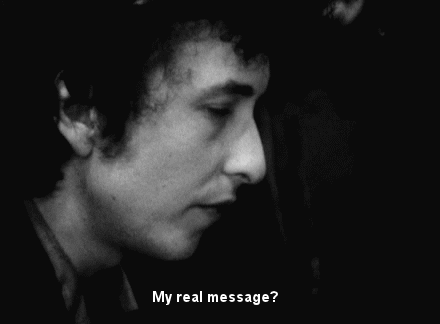

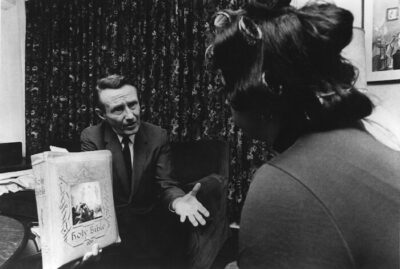
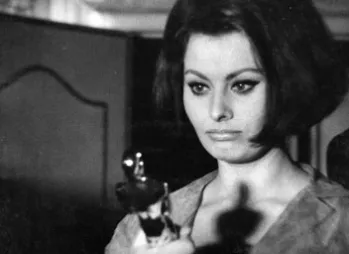
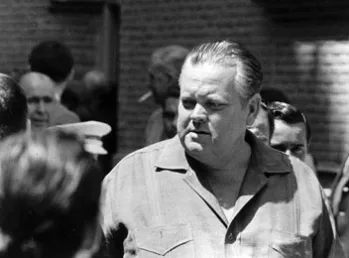
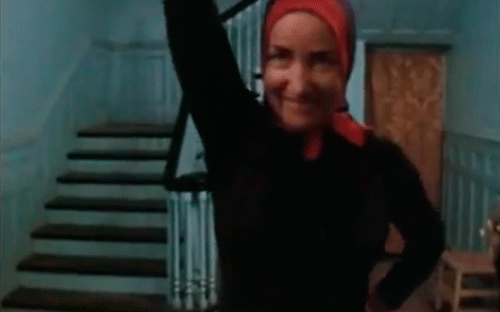


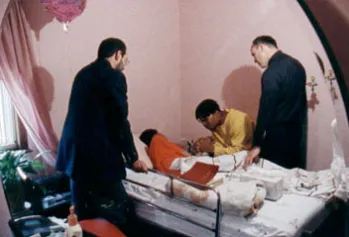

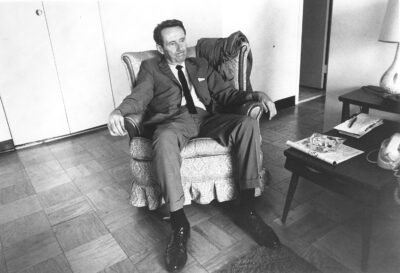

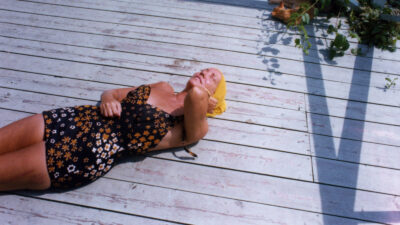
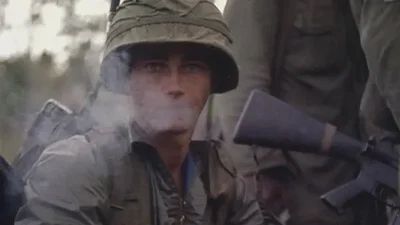
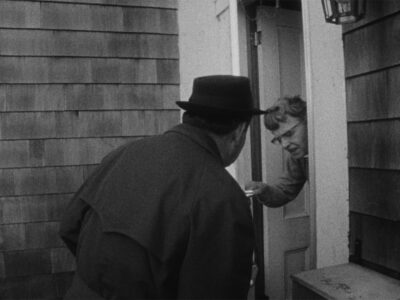
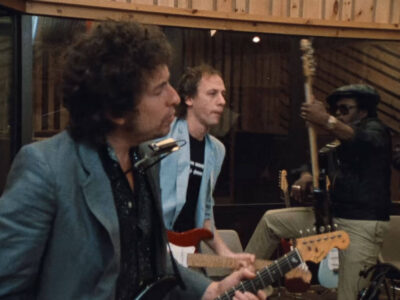
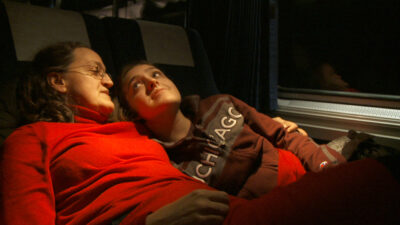
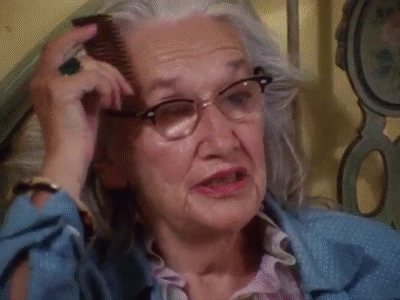



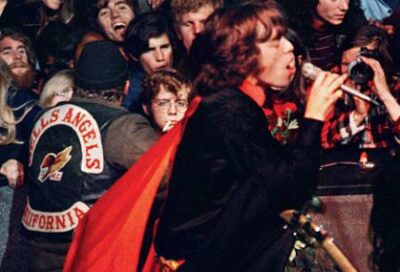



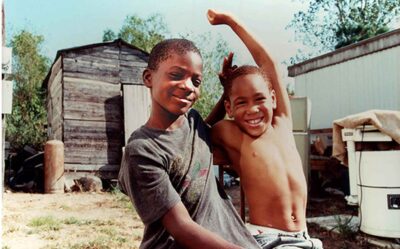
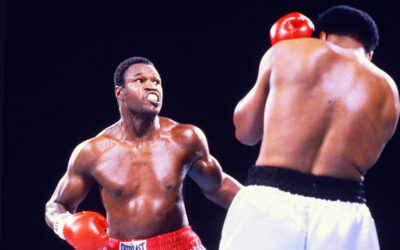

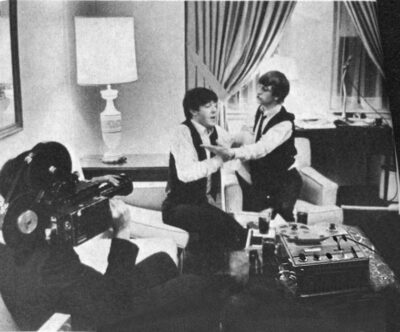

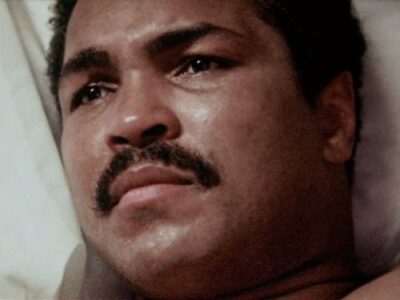
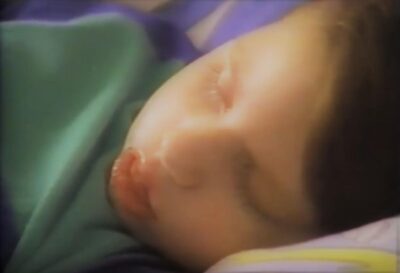






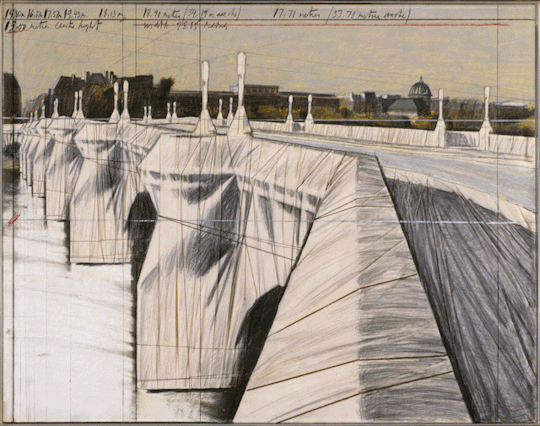
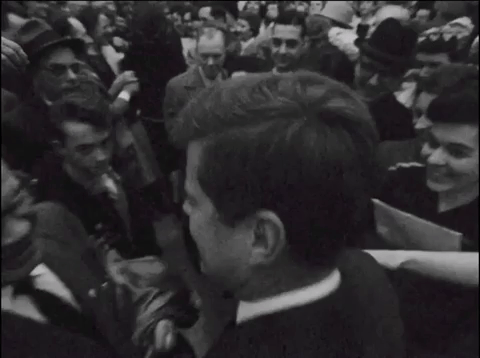
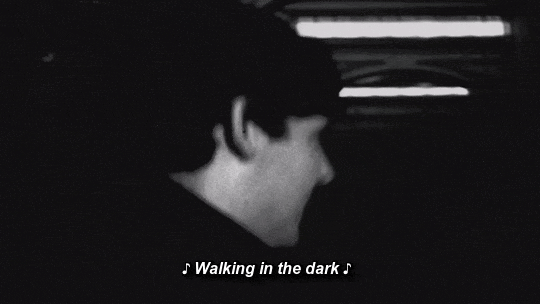




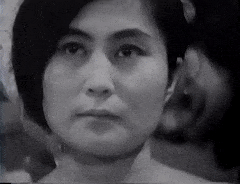
_____
Further
MAYSLES FILMS
Albert Maysles @ IMDb
The Maysles Documentary Center
Cut to: The Maysles Brothers Had a Few Sisters
When the Maysles Brothers Filmed the Beatles
The Maysles Brothers and “Direct Cinema”
GERALD PEARY: The Maysles Brothers
Witness to a killing: the Maysles brothers on Gimme Shelter
Directing the Truth: An Interview with Albert Maysles
The Maysles @ The Criterion Collection
The Direct Cinema of David and Albert Maysles
The Maysles Brothers @ Letterboxd
Grey Gardens Lives On: A Tribute to the Maysles Brothers, and some others
THE MAYSLES BROTHERS WERE RIGHT
When does the observer become the observed? The Maysles meet the Beales.
Albert And David Maysles: Through The Documentary Lens
Albert Maysles’ Last Film: Why ‘In Transit’ Has Been Kept Out of Theaters Since 2015
When Tragedy Struck A Rolling Stones Festival, And The Maysles Brothers Caught It On Film
A Filmmaker Unafraid to Probe Darkness
The Late Great Albert Maysles
Errol Morris remembers Albert Maysles
____
Extras
Albert and David Maysles on Letterman, June 21, 1982
Albert Maysles – The best way to approach documentary film making
Interview With Albert and David Maysles, 1968
_____
Interview
by Tom Ryan
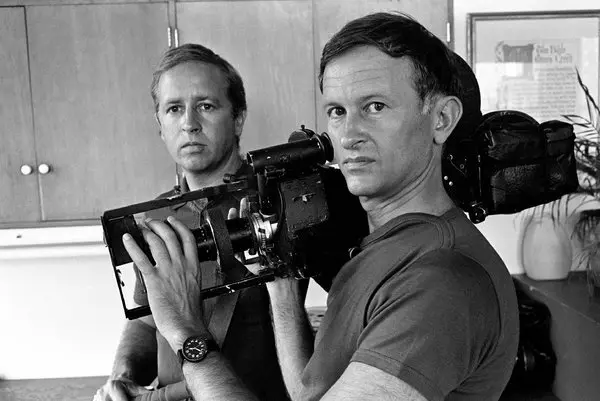
Did you and your brother form any guiding principles for how you wanted your company to work?
It’s kind of an odd company from a business point of view. I remember that there were a couple of graduate students from Harvard University Business School who, as a project, analysed the company, and they could never quite figure out how it worked. But they concluded that, nevertheless, it was successful. These days it’s been more difficult because of the war and the recession.
When you say “difficult”, you mean to get projects up?
Well, to get financing. But I think it’s all the more important these days to make good films because the level of television has dropped so far down. It’s got worse and worse.
Do you have the money and the distribution in place before you begin a production or is that something that happens after you’re under way?
We do it both ways. For example, this month I’m going to be shooting a film of the Dalai Lama’s visit to New York. I don’t have any distribution set up, but I happened to meet Richard Gere, who is very close to him, and through him we’re getting the financing. But we haven’t made any arrangements for distribution yet [author’s note: I can find no evidence of this film ever being completed].
On the other hand, I’ve made several films where we had the financing ahead of time. And with the distribution set up as well, making films for Home Box Office. I made four half-hour film portraits of filmmakers for the Independent Film Channel. They paid for them and they showed them and they gave me complete creative control.
I notice your credits have changed over the years, that they’ve gone from being “directed by Albert Maysles” to a recurrent “with Albert Maysles” (as on Concert of Wills and Lalee’s Kin). What does this mean?
It doesn’t mean that anything’s different from my role before, except that I wanted to give others more light in the credits. So that more attention is paid to them. Because if my name appeared earlier, I think it would take away too much from their work.
Over the years, have there been any guidelines dictating your choice of subjects?
I believe that the strongest kind of film is the one where, somehow or other, it’s related to something very personal on the part of the filmmaker. Early images, early experiences, something basic to your own interests and personality. That’s why so many films don’t quite make it, because they’re assignments rather than coming from the filmmaker’s heart. So, for example, when my brother and I made Salesman, we didn’t think of it quite at the time, we weren’t quite conscious of it, but later on we realised that part of our motivation was related to the fact that Paul Brennan, in a strangely obverse way, was very much like our father. And when you discover something like that, which may be a conscious or an unconscious motivation, then you’re probably on the track of something very strong.
I wonder how that actually affects your perception of the character as you’re filming what happens?
I think that it makes you even keener to discover more of what’s going on and to capture it in all of its significance. I think this is true of art in general. I think that an assignment is not as strong as a work that comes from conviction.
In your short about Truman Capote (With Love from Truman, 1966), Capote describes style as “something to be arrived at, bit by bit”. How did yours develop?
I think, in some part, it came from my personality. As a child, and even now, I’m a product of Attention Deficit Disorder. I didn’t know that until relatively recently. But people with this disorder tend to be much better listeners and observers and that’s been a wonderful advantage for me. I observe, I listen, I watch. When I’m paying attention, I have a very, very acute sense of what’s going on and, in a strange way, I have this faculty for anticipating something interesting that’s supposed to take place and I’m ready for it.
I was on a bus not so long ago in New York and I saw this woman sitting across from me. She was a black woman, very much overweight, and I found that, somehow or another, I was able to look at her without offending her. She was just sort of looking up. And I nudged the woman next to me so that she also was looking at her. Now I still don’t know what made me think that something was gonna happen. But, anyway, at that very moment, a little girl next to the woman I was watching – who was also black and had to be the woman’s daughter, maybe eight or nine years old – gets up, walks around in front of her mother and nestles her head between her mother’s enormous breasts and falls asleep. It changed everything. The woman next to me said, ‘Oh, my God. I’m so glad that you called my attention to what was going on.’
A really good photographer is somebody who notices something where somebody else might just see that something without noticing it. And that sort of thing has happened to me over and over.
Because of the retrospective, I’ve been able to watch a lot of the films on DVD at home with my teenage daughter. She turned to me at the end of Salesman, in fact, and was horrified by some of the people but said what was remarkable is that the film didn’t judge them. And I think she’s right.
That’s right. It’s very important.
This is a constant for you?
It’s very important. I’m at the complete opposite end of the scale from, let’s say, somebody like Michael Moore, who is intent on doing people in.
Yes. Sometimes with good reason. (laughter)
Nowadays, there’s too much attention paid to making films that are on social issues rather than on something more basic. I’ve done some filming already for a project where I get on long-distance trains and I’ll find somebody during the course of the trip where I only discover the story that is gonna take place when they get off the train. It could turn out to be very, very interesting. I’m planning to film in maybe four or five countries and find a wonderful story in each country. But all of it has to do with the train, which is kind of a metaphor for life itself as it goes from station to station.
In connection with that, so many of us have said, and truthfully so, ‘I just saw this film based on a book, but the book is better.’ The book is almost always better than the film! But I can see where, in making documentary films, we can – what shall I say? – do something that is sort of a translation of a literary form. The documentary feature could be like a non-fiction novel. And we should also look for poetry. That scene I described, with the woman suddenly becoming a mother, could have been a piece of poetry.
But I don’t think kids who go to film school are taught to recognise that kind of potential. And I think that they would do well to keep their eye open for a poem rather than think, ‘Oh, I’ve gotta spend $100,000 of money I don’t have to make a full-length film.’ That little thing, those three minutes, would have cost me 50 cents.
If you’d had the camera with you…
Yeah.
Did actually witnessing that scene bring on the train idea?
No. I’ve had it for many years. One thing that I’ve already shot was when I was travelling across the country with a camera some years back. As we were pulling out of Pittsburgh station, I was walking through the train and I saw in the cafeteria coach a young woman in her 20s. Across the aisle were her two children. She was sitting at an empty table and I could see there was something nervous about her. I asked if I could join her and told her that I’d like to do some filming if it was OK with her. She said, ‘Oh, yeah.’ And then right away she told me why she was on the train.
When she was three years old, her parents had broken up in an ugly divorce and her father got custodianship over her. And he vowed that the mother would never see her again. Here she was, 26 years old, 23 years had gone by, and she had never seen her mother. The night before she’d got a call from a woman in Philadelphia saying that it was her mother, that she should get on the train as soon as possible. There was no time to exchange photographs; they didn’t know what each other looked like. But she’d be waiting for her at the train station.
So I’m filming all of this, we get off the train and she looks around. There’s nobody there. She walks up the stairs and there’s this woman who suddenly flings open her arms, embraces her, and the mother puts her head over her daughter’s shoulder and says to me, ‘Isn’t she gorgeous?’ When you can get that kind of stuff…!
It happened!
Yes. And it should be captured.
How do you get people to agree to let you use them in a film? Say with somebody like Joe Levine (in Showman)?
I think it’s been very easy for me to gain access to them because I just have a genuine liking for people. Even if it’s somebody I may differ from greatly, I feel that I really want to know them and that the potential’s there to like them. So, from the very start, as soon as I see somebody, the way I look at that person conveys a kind of empathy. And so it’s been very easy for me to gain the trust that you need. And I get it right away, no matter who it is.
When I first met Fidel Castro, for example, from the next day I was with him day and night. But the very first thing I shot of him is one of the best things I’ve ever filmed.[This was for Yanki, No! (1960), directed by Robert Drew for the ABC Close-Up TV series and shot by Maysles.]
How did you come across the Beales, Edith and Edie?
I got a call one day from Lee Radziwill. The Beales are her aunt and cousin and she wanted to make a film about her childhood in the Hamptons, on Long Island. And so she came to me with a list of some 40 or so things that she thought were going on that might be interesting for the film. Item number 34 was her aunt and cousin.
We began to film and within a few days she introduced us to the two women. A few days later she asked to see what we’d shot and I think that, when she saw them on film, there was no way for her to compete with these two characters. So she kind of lost interest, and then several months later my brother and I devoted six weeks to filming the two women.
And they had no objection to you being there?
No objection. They loved every bit of it.
One of them says at one stage, ‘Where have you been all my life?’
(laughter) Well, the daughter told us later on, after her mother had died, that, at one point, she’d asked her if there was something else she wanted to say. And her mother said, ‘There’s nothing more to say. It’s all in the film.’ So the film had to be something that they believed to be quite a truthful account of who they were. And something that was very important to them.
So they were pleased with it?
Oh, yeah. They were delighted. I remember the first word that came out of the daughter when we showed them the film: she said, in a very loud voice, ‘You know, the Maysles have created a classic.’
And you were quite happy to go along with that?
(laughter) Oh, yeah! Oh, yeah!
I find that fascinating because, in so many ways, they’re such a sad couple. And the film strikes me as very poignant. Those images of the cats furtively looking out through the grass: it’s as if they’re like the women.
But you know, when you come to think of it, how many people, courageous enough to share their actual lives with a camera, would be as interesting to the larger population as these two women? Just the way their lives occurred made a feature film. I met a woman who’d seen it 120 times. That was a year ago. I saw her more recently and it’s up to 126 now. But it’s not uncommon for people to see it five or ten times.
Are there any specific rules governing the way you work?
Oh, yeah. I avoid interviews and narration. I avoid a host, somebody telling us all along what’s going on. I think what a documentary is very special at doing very well is depicting somebody experiencing something, so that the viewer experiences that as well. The most powerful moments are when, through the process of identification, you’re that person on the street. That’s quite a gift to be able to do that and it helps to establish a common ground by which we can understand, connect with, engage ourselves with, the emotions of people whom we might never otherwise come in contact with.
That’s interesting because the idea of being engaged with someone’s experience does seem on the face of it to contradict that idea of remaining detached from your subject. It must be a difficult line to walk?
Well, it was very difficult to be detached from these two women in the film. But I’m sure that there are some people who watch the film and, because they’re afraid to connect with these two people who might appear to them to be crazy, they resist this kind of engagement. You know what I mean? People come up with all kinds of excuses: ‘Oh, no, this is exploitation. Some people shouldn’t be filmed.’ Maybe they’re just afraid of this process of revelation, that they themselves might get caught up in it. I think. Weird things happen to some people when they see this film.
I know that when it was reviewed by The New York Times, Walter Goodman just hated the film. He didn’t say so because he didn’t want to offend the two women. But what he was saying was extremely offensive to them. ‘Why are they showing all of this flabby flesh?’ Obviously he had problems with age. And he thought that this was a terrible thing, that we should be disgusted with ourselves for having made this film. He couldn’t say they were crazy because he’s supposed to be defending them against these awful filmmakers. But between the lines that’s what he was saying.
You, above almost all other documentary filmmakers, seem to have foregrounded the importance of the editor in shaping the material?
Oh, they’re very important. I handle the camera. I’m the one who does all the shooting. So I’ll say it’s all in the camerawork. (laughter) And the editors will say, ‘No, it’s all in the editing.’ Which is fine, although it’s not true. It’s all in both of these things. But if you’re taking on all the responsibility, of both shooting and editing, so much the better for the film.
Capote also talks about how all material has “an organic shape, like an apple”. Does the material you shoot always have an inherent shape, do you think? Say with Gimme Shelter?
That’d be best answered by Charlotte Zwerin. (laughter)
And she’d probably always say, ‘No’?
(laughter) It’s her job to give it shape. Right? But I think also, just as it is in shooting, the editorial process is one of discovering something that’s already there. And she’s the best editor I’ve ever met. She’s fabulous. She edited both Salesman and Gimme Shelter.
The decision to structure Gimme Shelter around the Rolling Stones looking at the monitors gives it a shape that it otherwise mightn’t have had.
Oh, yeah. When we finished shooting at Altamont and the film was being put together, we remembered that the Stones had said they’d like to see some of this stuff. And so we took them up on that and showed it to them, and that became our opportunity to get their reaction to the event in a very spontaneous fashion.
Can you remember who actually came up with that brainwave?
I think it was Mick.
Do you have guidelines for how many cameras you will use?
For Grey Gardens and Salesman, it was just my camera. That’s all. In a way that’s better because more than that is an imposition. Now, when you’re filming something like Altamont, you want a number of cameras all over the place.
Apparently George Lucas and Walter Murch both shot some footage for Gimme Shelter?
That’s right. The odd thing is that, unfortunately, George Lucas’s camera, which we rented at the last moment, was defective. I don’t remember that we could use any of his material, but we credited him in the film.
What do you think about digital video?
Love it. It’s a turning point for the better in documentary filmmaking. I can now do all kinds of things that I can’t do with a film camera. For one thing, it doesn’t run out for 40 minutes or an hour, whereas with a film camera, every ten minutes you’ve gotta reload. You lose a lotta good stuff that way. And it’s also much more sensitive to light and you don’t have to change film stocks when you’re indoors or outdoors. With the flip of a switch, you can go from one to the other. Actually, I came up with 30 reasons why I switched to digital, and almost any one of them is enough to make a change.
That’s interesting because others, including Frederick Wiseman, have refused to use it.
Well, he’s not a cameraman.
Does ‘direct cinema’ mean the same thing now as it meant 40 years ago?
Pretty much. Although, you know, Robert Capa was once asked what advice he’d give a young photographer and he said, ‘Get close. Get very close.’ And so, especially with this new video equipment, you can get that much closer to what’s going on without interfering. And that advice is still about as good as you can get.
I love the way that meanings in your films emerge gradually, that – as with a painting – you have to look at everything in order to make sense of the parts. Because at the end of your films I feel that I’ve come to understand the bits in a way that I never could have if I’d seen them in isolation.
That’s great. Also I think that with a good documentary, whether it’s mine or somebody else’s, you can’t get it all in one screening. You want to see it again. Very few people have seen Gimme Shelter only once. The only film I’ve ever seen more than twice is La Strada (1954). And I think that’s because I had a personal connection with it. I had an uncle who was just like the main character, and I think that in a way I was watching another version of my uncle every time I watched it.
Do you try to keep up with the work of other documentary filmmakers?
I saw a five and a half hour film by Jonas Mekas [presumably As I Was Moving Ahead Occasionally I Saw Brief Glimpses of Beauty (2000)] that was extraordinary. And yet, from a purely technical point of view, it was a disaster. He couldn’t keep the camera steady, things were out of focus and so forth. But he had a poetic eye. And that was most important.
____________
16 of the Maysles’ 57 films
____________
Psychiatry in Russia (1955)
‘In 1955, Albert Maysles traveled to Russia, 16mm camera in hand. During this trip, he shot what was to become his first film, PSYCHIATRY IN RUSSIA, an unprecedented view into Soviet mental healthcare.’ — Movie Lover 93
the entirety
____________
Showman (1963)
‘Before making “Salesman,” their documentary about door-to-door Bible peddlers, the Maysles brothers, Albert and David, directed this 1963 portrait of the wheeler-dealer film distributor and producer Joseph E. Levine, which covers similar ground but from the top down. After years as a hustling film booker, Levine made a name with “Godzilla” and a fortune with “Hercules”; here, he’s seen masterminding the American release of “Two Women,” a film by Vittorio De Sica starring Sophia Loren, with a similar blend of savvy and hucksterism—as well as with an army of reps equipped with facts and figures. Loren is often around (one of her junkets opens the film), and her magical allure contrasts painfully with the hard-nosed milieu that brings it to the screen. (So does Kim Novak’s; her cameo is clever, unvarnished, and electrifying.) Levine, intensely aware of the probing camera, tries to keep his flamboyant vulgarity under wraps, but his lewd grin as he describes Loren’s appearance suggests exactly where he thinks art and commerce intersect.’ — Richard Brody
the entirety
_____________
What’s Happening! The Beatles in the USA (1964)
‘A humorous, freewheeling and candid account of the Beatles arrival in America in February 1964. The Maysles follow the Fab Four for five days, from the crazed JFK airport reception to unguarded moments inside the Plaza Hotel in preparation for their landmark Ed Sullivan Show appearance to their equally frenzied homecoming.’ — maysles.org
Excerpt
The Making of …
_____________
Cut Piece (1965)
‘Yoko Ono sits motionless on the concert hall stage, wearing her best suit of clothing, with a pair of scissors placed on the floor in front of her. inviting the audience to come up on stage – one at a time – and cut a bit of her clothes off which they were allowed to keep, covering her breasts at the moment of unbosoming.’ — paulanow
the entirety
____________
Meet Marlon Brando (1966)
‘Journalists from all over America meet Marlon Brando in a New York hotel room to interview him about his new film, Morituri. Seeing this as an opportunity to let the legendary actor promote the film, they find Brando unwilling to talk about it, instead he is more interested in larking about and turning on the charm when being interviewed by a former winner of the Miss USA competition.’ — Letterboxd
Excerpt
___________
Orson Welles in Spain (1966)
‘‘This will be a film about the spectacle of death’, Orson Welles said about this film by him and the Maysles brothers. At least, that was his intention, until the collaboration was cancelled and the film plans shelved once and for all. In this short introduction, Welles explains the project to a group of interested people. Impassioned, he tells of the horrors of the bullfight and explains that people who are more or less addicted to the spectacle will be the protagonists of the film. The reason for co-operating with the Maysles brothers becomes clear when he explains about the intended method of filming. The directors will use professional actors, but the course of the story has not been laid down in a script. It will be a largely improvised story that will be shot like a documentary.’ — IDFA
Excerpt
_____________
Salesman (1969)
‘This radically influential portrait of American dreams and disillusionment from Direct Cinema pioneers David Maysles, Albert Maysles, and Charlotte Zwerin captures, with indelible humanity, the worlds of four dogged door-to-door Bible salesmen as they travel from Boston to Florida on a seemingly futile quest to sell luxury editions of the Good Book to working-class Catholics. A vivid evocation of midcentury malaise that unfolds against a backdrop of cheap motels, smoky diners, and suburban living rooms, Salesman assumes poignant dimensions as it uncovers the way its subjects’ fast-talking bravado masks frustration, disappointment, and despair. Revolutionizing the art of nonfiction storytelling with its nonjudgmental, observational style, this landmark documentary is one of the most penetrating films ever made about how deeply embedded consumerism is in America’s sense of its own values.’ — The Criterion Collection
the entirety
_____________
Gimme Shelter (1970)
‘Called the greatest rock film ever made, this landmark documentary follows the Rolling Stones on their notorious 1969 U.S. tour. When three hundred thousand members of the Love Generation collided with a few dozen Hells Angels at San Francisco’s Altamont Speedway, Direct Cinema pioneers David and Albert Maysles and Charlotte Zwerin were there to immortalize on film the bloody slash that transformed a decade’s dreams into disillusionment.’ — maysles.org
the entirety
_____________
Christo’s Valley Curtain (1973)
‘Christo, an artist, wants to put a piece of orange fabric across a valley. This Oscar-nominated film documents his success showing how a large piece of fabric can look small when accomplished.’ — IMDb
the entirety
____________
Grey Gardens (1975)
‘The making of Grey Gardens actually came about by accident. Impressed with their work, the Maysles were approached by Lee Radziwill and her sister, Jacqueline Kennedy Onassis, about doing a documentary about their lives growing up in the Bouvier family. Their family, of course, included their eccentric aunt and cousin in East Hampton.
‘The brothers agreed to make the film; they shot footage over two weeks and immediately came to a startling realization: the charming and eccentric Beales would make much better film subjects than Jackie and Lee. As such, the Bouvier family documentary was quickly scrapped, much to the dismay of Lee. She, however, confiscated the initial footage of the Beales (reportedly over one and a half hours) and it has yet to see the light of day. There are rumors that she plans to release the footage sometime in the future.
‘The Maysles spent close to $50,000 on film and equipment before they went back to visit the Beales with their new proposal a year later. The women were ecstatic with the prospect of being filmed; it not only might offer them the fame that Jackie and Lee were accustom to, but would also give them the chance to make some much-needed money. The Maysles’ offer included an advance of $10,000 ($5,000 for Big Edie and $5,000 for Little Edie) and 20 percent of the future profits. With the green light, the Maysles, along with co-directors Ellen Hovde and Muffie Meyer, filmed the Beales for approximately six weeks in the fall of 1973. They practically lived at the mansion and resorted to wearing flea collars around their ankles to keep the bugs at bay.’ — greygardensonline
the entirety
______________
Muhammad and Larry (1980)
‘In October of 1980 Muhammad Ali was preparing to fight for an unprecedented fourth heavyweight title against his friend and former sparring partner Larry Holmes. To say that the great Ali was in the twilight of his career would be generous; most of his admiring fans, friends and fight scribes considered his bravado delusional. What was left for him to prove? In the weeks of training before the fight, documentarians Albert and David Maysles took an intimate look at Ali trying to convince the world and perhaps himself, that he was still “The Greatest.” At the same time, they documented the mild-mannered and undervalued champion Holmes as he confidently prepared to put an end to the career of a man for whom he had an abiding and deep affection.’ — Letterboxd
Excerpt
____________
w/ Susan Froemke, Deborah Dickson Letting Go: A Hospice Journey (1996)
‘In our society, death fills the airwaves, it targets strangers, creates statistics. Yet when it finally gets personal, we are ill-equipped. Exploring this almost taboo subject through the stories of three hospice patients, the film creates an understanding of the hospice movement.’ — MUBI
Excerpt
____________
w/ Deborah Dickson, Susan Froemke LaLee’s Kin: The Legacy of Cotton (2001)
‘The principal character in LALEE’S KIN is 62-year-old LaLee Wallace, mother of a family of eight children in Tallahatchie County, in the Mississippi Delta in the South of the United States. LaLee belongs to the numerous undereducated labourers who left school at a young age to earn a living in the cotton industry. As a result of the advancing mechanisation in agriculture, most of them have now become unemployed. Due to their low level of education and their poverty, their situation has become pretty desperate. Another important character in the film is Reggie Barnes, who has been appointed chief inspector of all district schools. He is determined to break the vicious circle and devotes himself to improving the pupils’ level of education.’ — IDFA
Excerpt
____________
The Secret of Trees (2013)
‘What do trees know that we don’t? 13-year-old inventor Aidan realized that trees use a mathematical formula to gather sunlight in crowded forests. Then he wondered why we don’t collect solar energy in the same way.’ — Forward Focus
the entirety
_________
Iris (2015)
‘IRIS pairs legendary 87-year-old documentarian Albert Maysles with Iris Apfel, the quick-witted, flamboyantly dressed 93-year-old style maven who has had an outsized presence on the New York fashion scene for decades. More than a fashion film, the documentary is a story about creativity and how, even in Iris’ dotage, a soaring free spirit continues to inspire. IRIS portrays a singular woman whose enthusiasm for fashion, art and people are life’s sustenance and reminds us that dressing, and indeed life, is nothing but an experiment. Despite the abundance of glamour in her current life, she continues to embrace the values and work ethic established during a middle-class Queens upbringing during the Great Depression. “I feel lucky to be working. If you’re lucky enough to do something you love, everything else follows.”‘ — maysles.org
Trailer
_____________
In Transit (2015)
‘The last film by documentary giant Albert Maysles takes place entirely on the Empire Builder, a train that runs between Chicago and the Pacific Northwest over three days. Some passengers are heading toward new opportunities, while others are just trying to get away.
‘One scene features a young man travelling from Mississippi to Seattle. He says, “Nobody at work knew I was fixing to just pack up all my stuff and leave. … They actually thought I was going to be at work last night. … Sometimes you just gotta do it. You know, what do you have really to lose?”
‘In Transit caps a long and distinguished career for Albert Maysles. The documentary was finished more than two years ago, just before the award-winning director died at the age of 88. Since then, Maysles’ last movie has been difficult to see because of questions about who owns the rights. (Audiences in New York can see it on two screens this week, including the Maysles Documentary Center in Harlem.)
‘Rebekah Maysles, the filmmaker’s daughter, says, “He had always thought that it would be wonderful to make a film about people who were on these trains — meet them, and then follow them off the train. It was a place where you could have access to all different people with all different stories.”‘ — npr
Trailer
Excerpt
*
p.s. Hey. ** Misanthrope, Maybe if they revive ‘The Jetsons’ it’ll happen in a dream sequence in one of the episodes. Otherwise, … nah. Our weather has just gone uncharacteristically hot today, and not for the last time this year, needless to say. I’ll nibble at some Kimchi and see, thanks. And thank you for the stars. ** Dominik, Hi!!! Awesome, it’s a fantastic novel, really. I know this sounds insane to say, but of the many thousands of songs Pollard has written and recorded, there’s only one that isn’t at the very least quite interesting. I knew this boy named Ben when I was young. I knew him from when we were both about 10 years old through high school. Until he hit his early-mid teens he was insanely cute. He was the ultimate dream date of pretty much all of his classmates, the girls and the gay boys and maybe even some of the straight ones. He was famous at the schools for being mindblowingly cute. But then he hit mid-puberty, and his face was suddenly eaten alive by extreme acne that left it permanently ravaged with scars, and everything changed, and I always wondered how he coped with going from being a god to other kids to being a scary looking guy. It must have been really traumatising. I just can’t schmooze. I just can’t be that level of insincere and fake and manipulative. People expect and want me to, and I sometimes wish I could, but it’s not in my makeup. I’m a bit too painfully sincere. Sucks? Nice hats. I’m pretty sure I would be wearing a boring Eiffel Tower hat. Oh, no, wait, I just checked, and I’d be wearing a Tour Montparnasse hat, and it’s by far the most boring, ugliest building in Paris, so that’s depressing. Your love may not have completed succeeded, but steady improvement continues, and it’s the thought that counts, right? Two writer friends of mine have booked a table for four at my favorite Ethiopian restaurant tonight, and I don’t think Zac can go, so love is buying you a round-trip ticket to Paris for this afternoon, a room in a ***** hotel, and a seat at the table, all on love’s massive expense account, G. ** Bill, Thanks, man. I’m getting there, health-wise. Warmerdam: on the hunt. I was going to see ‘Vortex’ today, but the plan got delayed. It’s hot here, so I guess I’ll spend my day cringing and cowering. It would be worse, I suppose. ** David Ehrenstein, Ah, the never to be read genius! Everyone, Mr. E points any of you interested at a ‘neat’ documentary on Marcel Proust. Here. ** TomK, Hi, Tom Thank you! It was a total honor! I’m excited for the world! ** Steve Erickson, Good to hear about ‘Vortex’. I was going too see it today, but, due to unforeseen circumstances, now probably later in the week. Everyone, Steve has reviewed Obongjayar’s album SOME NIGHTS I DREAM OF DOORS for Slant Magazine here. Sucks about the Grandrieux essay. I was looking forward to it. I’ve read Sarah’s book, and have Peter Staley’s book here to read, and that’s seems like enough. ** RYANRAZE, A lot of the greatest things in the world in every medium involve high concepts realised via ‘amateur’ means. Well, if it’s like ‘Hausu’ in some way, you’ll win. I think I’ve seen Tamotsu Yato’s photos around. The work looks very familiar. I’ll look further when I’m out of the p.s. factory. 6’9″. That’s a very tall drink of water, as they used to say. Gotcha on the self-identification. I’m not even interested in homoeroticism, so I don’t know what the fuck I am, ha ha. Later, have fun, me. ** Paul Curran, Hi, Paul! Maestro! Robot neighbor! I’m glad things are getting back to normal there. Zac and I are still watching your country’s status like hawks looking for the first safe opportunity to swoop down on you guys. Any writings progress/news? Hugs from way the fuck over here! ** Okay. I’ve never devoted a day to the great Maysles brothers before, and that’s weird, and now that neglect is a nonissue. Enjoy. See you tomorrow.




 Now available in North America
Now available in North America 
Hi!!
That’s some seriously awe-inspiring accomplishment – having only one song that doesn’t really work out of thousands.
Oh my god… Poor Ben; it really must’ve been a severe trauma. Even one or two bigger zits could make me feel so miserable – I can’t even imagine how having his whole face covered in acne, which can also be fucking painful, made him feel about himself. It’s horrible.
Luckily, nobody really expects me to schmooze too often, but yeah, I understand completely. In my view, it’s definitely a good trait – that you’re not willing to or can’t. But then again, I guess it’d come in handy when you’re trying to get funding for your films, for example…
Oh, no! I’d be happy to switch hats if you happened to fall insanely in love with one of mine, haha.
Shit, this head cold is really fucking stubborn!
Wow, love’s extremely generous! Thank you, I’m more than happy to join you!! (How was your dinner?) Love dreaming about dark-red shirts and dark-red carpets and dark-red walls and waking up feeling weird, Od.
Ah the Mayskes! Great filmmakers and great men. “Grey Gardens” is their most famous work and in many ways theirmasterpiece as t displays the modesty and Patience that was key to their art. They didn’t overwhelm their subjects. They respected them.But they were light on their feet and thus dealfor “The Beatles. Next to “A Hard Day’s Night,” “What’s Happening” is the best film eer made about the great moptops. “Showman” and “Meet Marlon Brando” also have their charms. Brando’s far more eccentric than Edie Beale.
I’ve enjoyed the work of the great Maysles brothers for a long time, and it’s a pleasure to revisit it today.
Arrangements for my move to the new flat continue apace. Removal guys will be shifting everything (including 800 records) down from Dundee on the 19th. Dunno how many books there are in there, but I suppose serious conversations will have to be had about where they’ll all end up.
Last night I saw the film adaptation of Lords of Chaos via YouTube, which I must say I enjoyed quite a bit. Rory Culkin was especially good as Euronymous, I thought. I read the book about 20 years ago and it’s still a great story that resounds through the ages.
Hey D-
Love the Maysles though I’ve only seen there 3 biggest feature lengths. Salesmen really affected me when I first saw it. Missed the TK day yesterday but just looked through and it looks amazing, will definitely be getting my hands on it.
My folks are in town and it’s perfect they are staying at an air bnb across the street so we all have space. We have a really little house. Basically we have meals, they nap, we drive around a bit, and repeat. It’s nice to see them, been 3 years and they are in their 80’s My mom says this is the last time she wants to ever fly.
Oh, almost forgot, I got another spoken poem up that I’d like to share.
https://helloamerica.bandcamp.com/track/laurence-lillvik-vestibule-3
Take care!
Hey Dennis! Quinn here, long time no talk. How’s it going? How’s everything in Paris? I imagine you’re still working to get your film going, is there any movement on that front? I’m hoping for the best with the film and rooting for you/cheering you on.
I’m doing so-so lately, just spending lots of time at the gym, I got a job working at a movie theater, part-time. It’s just menial work but it’s humbling to do menial work, plus it’s not too difficult…I’ve been doing therapy too but I think I’m going to get a new therapist soon. Current one is not a great fit. Overall I’m kind of admitting to myself that I’m bipolar, it’s nothing to be ashamed of really but it’s a bit of a bummer. I think for a long time I was in denial. It’s strange though, as bummed as I feel, I also feel optimistic in a way. I’m looking forward to the future. (I did join a support group for mood disorders and that has been better for me than the therapist, go figure…)
I saw Grey Gardens for the first time last year and really loved it. I was never aware of the question of whether the mother and the sister were performing or if they were being authentic, I should rewatch it soon and look out for this aspect.
Just writing to say hello quickly. I think back to our meetup in November and remember it fondly. Hope you are in high spirits and I hope you have a lovely summer.
Dennis, so much greatness to explore in this Maysles brothers day! Excellent on Zac and you possibly swooping down here. I’ve heard they’re opening up more from July-ish… Yes, thanks! Actually, was heads down over spring, and Ben just signed off on the edits for the Ap Party novel I’ve been working on. They’re doing the layouts soon. So, if things go as planned, hopefully coming out end of this year… Big hugs right back from here!